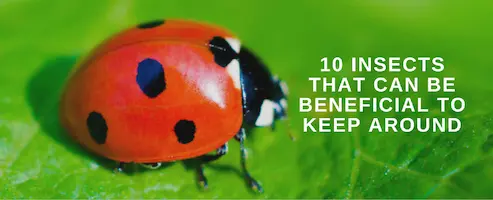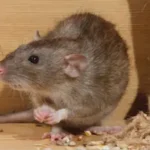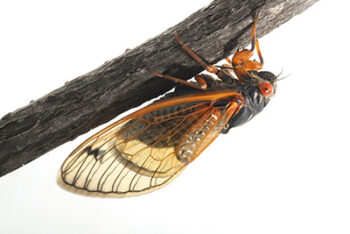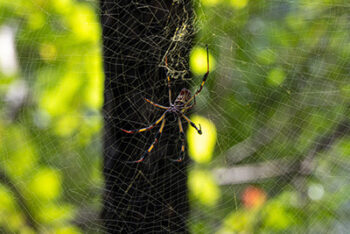
Not every insect is bad. In fact, our world and ecosystem wouldn’t be the same if insects didn’t exist.
Many insects offer inherent value to our ecosystem through pollination and even pest control. Before you grab the swatter, don’t forget these ten beneficial insects serve a good purpose in your yards and gardens.
Ladybugs
Ladybugs are commonly known by their red shell and black spots. They are helpful at fighting harmful agriculture pests such as aphids and other plant parasites. When you see a ladybug in your garden, let them be. They’re an insect you want to have around.
Damsel Bugs
Damsel bugs are soft-bodied, elongated, winged terrestrial predators. They are yellow to tan in color and have large eyes and thin legs. These bugs are also helpful in agriculture because they prey on many types of crop pests. You’ll often find damsel bugs in fields of legumes or alfalfa, but they may be found in other crops or non-cultivated areas too.
Spiders
While we don’t like spiders in our homes and we certainly want to get rid of poisonous spiders, spiders are needed in flower and vegetable gardens to avoid pest outbreaks. When your garden is populated with various insects, you’ll likely find spiders present. If you need to encourage their presence to keep pests away, you can attract spiders by planting perennial plants or straw mulches.
Lacewing
Lacewings look just as their name suggests. They have large, lace-like wings and are often found feeding on flower nectar. These beautiful insects should be welcomed to your flower garden because they feed on moth eggs, aphids, mites, and caterpillars.
Hover Flies
Hover flies are often confused for wasps or bees and have a similar appearance to lacewings. They feed on aphids and like to live in tight, hard to reach places. Their larvae appear in early spring and are beneficial in helping produce larger and more beautiful strawberries and raspberries.
Honey Bees
The honey bee is a valuable insect for pollination and the production of honey. Honey bees have faced a dramatic and unexplained decline which has become worrisome. A decline in honey bees could threaten food production and increase the costs of honey.
Wasps
While a wasp sting is painful and can lead to swelling, wasps of all varieties are helpful to gardens. Wasps are efficient at garden pest control by attacking eggs of unwanted pests. But, they can certainly be a nuisance and a danger to some people. If you have an allergy to wasp stings, you most certainly need have the wasps and their nests removed.
Ground Beetle
Though not a pleasant sight in your garden, the ground beetle is an insect you want there. These large, long-legged bugs feed on insects that are harmful to vegetables. If you plant tomatoes, potatoes, or cabbage, don’t forget to add a few logs, rocks, or perennial ground covers to attract the ground beetle.
Praying Mantis
Praying mantis are not only interesting looking insects with long front legs joined together when at rest, they also hunt pests around the clock. They move through vegetation searching for crickets, flies, grasshoppers, moths, and caterpillars. They have a boundless appetite for insects making them a valuable form of pest control in gardens.
Dragon Fly
Like several other insects mentioned here, dragon flies also feed on aphids and other pests in gardens. Dragon flies are especially helpful in keeping the mosquito population under control. When you see a dragon fly, enjoy their beauty and let them continue their work keeping pests at bay.
Next time you see one of these ten insects in your yard or garden, don’t be afraid. They each do an important job for the ecosystem. For other pests, such as termites, ants, or mosquitos, call the experts at Inman-Murphy for professional residential pest control.




